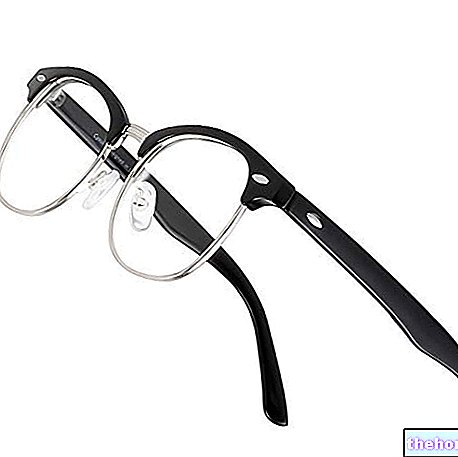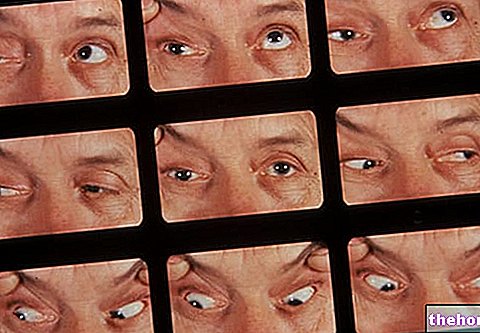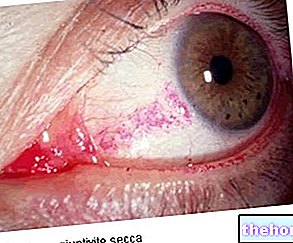Introduction
Keratitis is a generic inflammatory process affecting the cornea. Although often infectious in nature, keratitis can also be caused by surgical trauma or favored by the penetration of an object into the eye.
Although it can ideally affect anyone, infectious keratitis occurs more often in severely immunocompromised (eg HIV-infected) and defied patients;

Symptoms
Keratitis is always symptomatic: in fact, most of the time the observable signs and symptoms perceived at the ocular level manifest themselves quite clearly.
In most cases, keratitis begins with severe, rapid-onset eye pain, accompanied by intolerance to light (photophobia), hyperaemia (red eyes), and profuse tearing. Alongside these symptoms, the patient suffering from keratitis often complains of an "altered vision (blurred vision) and the perception of a foreign body inside the eye." Sometimes, keratitis can cause pain that prevents the patient from open the eyes.
The severity of the signs and symptoms of keratitis depends on the triggering cause, the depth of damage, the structural condition of the cornea and the host's immune status.
The characteristic signs of corneal infections make differential diagnosis difficult because most infectious keratitis manifest with almost the same symptoms.
Diagnosis
The diagnosis of a presumed keratitis begins with the anamnesis, or with the collection of the symptoms reported by the patient.
Subsequently, we proceed with an external ocular diagnosis (eye test), in which the ophthalmologist observes the appearance of the patient's eyes, the conjunctiva, the eyelids, the corneal sensitivity and the lacrimal apparatus. The analysis of the different ocular structures it is often performed with a tool called slit lamp, consisting of a light source and a magnifying glass. This instrument uses intense light to illuminate the iris, cornea, crystalline and the space between the cornea and the crystalline.
But what can be evaluated with the use of the slit lamp? The table shows the ocular characteristics that can be evaluated with this instrument.
Ocular structure to be observed in case of presumed keratitis
Features to be evaluated
Conjunctiva
Inflammations, structural alterations: follicles, papillae, ulcers, scars, strange bodies
Eyelid margins
Ulcerations, anomalies
Tear film
Dry eye
Cornea
Edema, ulceration in the stroma, perforation, thinning
Sclera
Ulcerations, inflammations, nodules, thickness
Confirmation of a presumed infectious origin of keratitis and identification of the causative organism can only be obtained through specific microbiological tests, which include cultures and stains of GRAM. By sending a tear sample or some corneal cells to the laboratory for analysis, it is possible to trace the triggering cause, thus establishing a specific cure in a relatively short time.
Treatment
The cure for keratitis must be carefully evaluated on the basis of the causative agent that induced it. Although the drugs used for the treatment of the different forms of keratitis are different, the objectives to be pursued are almost the same:
- Remove the causative agent
- Check for inflammation
- Promote re-epithelialization (regrowth of the damaged corneal epithelium)
NON-INFECTIVE KERATITES
In order to treat traumatic keratitis caused by the clumsy use of contact lenses, it is necessary to administer antibiotic ophthalmic ointments, which are essential to prevent a possible - as far as possible - bacterial ocular infection.
The treatment of non-infectious keratitis related to prolonged exposure to UV light involves the use of short-acting cycloplegic drugs (capable of inducing a temporary block of the parasympathetic nerves to favor pupil dilation and release the ciliary muscle). Sometimes, antibiotic ophthalmic ointments (to prevent possible infections) and eye bandaging for 24 hours may also be prescribed.
If the inflammation of the cornea is related to an abuse of ophthalmic corticosteroid drugs, it is generally sufficient to interrupt the therapy to restore the health of the eye; however, medical supervision is recommended.
The instillation of artificial tears in the form of eye drops is indicated to promote ocular lubrication in the context of keratitis related to dry eye.
Keratitis caused by an autoimmune disease is generally treated with corticosteroid eye drops; treatment of the underlying disease reduces the risk of relapsing keratitis.
INFECTIOUS KERATITES
Infectious keratitis tends to progress rapidly; therefore, timely intervention is essential to prevent any complications.
Depending on the causative agent, treatment for infectious keratitis involves topical application and / or systemic administration (by mouth or intravenously) of:
- Antibiotic drugs: eg. Levofloxacin, Gatifloxacin, Ofloxacin
- Antiviral drugs: eg. acyclovir (drug of choice for the treatment of Herpes virus viral keratitis)
- Antifungal drugs: eg. Voriconazole (indicated for the treatment of Candida and Fusarium keratitis)
In general, to speed up healing and reduce inflammation in the cornea in a short time, the doctor prescribes a treatment with corticosteroid drugs to be applied directly in the eye. However, it is recommended not to undertake a do-it-yourself treatment with this type of drugs: in the context of a viral keratitis, for example, the abuse of the aforementioned topical drugs can favor the appearance of very dangerous corneal ulcers.
Deepening
Acanthamoeba keratitis is the most dangerous corneal inflammation of all. When diagnosis and therapy are not immediate, there is a risk of devastating side effects, such as loss of vision in particular.
If vision is severely impaired, your doctor may recommend a cornea transplant.
Prevention
Considering that the habit of wearing contact lenses every day is an important risk factor for keratitis, it is understood that the proper use and cleaning of the lenses are essential to avoid inflammation of a traumatic origin to the cornea.
To prevent traumatic keratitis resulting from inappropriate use of contact lenses, it is recommended to:
- Prefer disposable contact lenses, to be changed from day to day
- Remove your lenses before sleeping
- Wash and dry your hands thoroughly before inserting or removing contact lenses
- Handle contact lenses with care, avoiding scratching or damaging them
- Always use good quality products for washing and maintaining contact lenses
- Don't wear contact lenses before swimming
The best way to prevent traumatic keratitis is to wear eyeglasses and sunglasses
Dry eye patients should use lubricating eye drops frequently to minimize the risk of corneal injury or trauma.
For the prevention of viral keratitis (and relapsing forms), it is recommended to:
- Do not put your hands to your eyes in case of herpes simplex viral infection (eg cold sores)
- Do not use cortisone eye drops without first consulting your doctor: this type of eye drops can increase the risk of keratitis and, in the case of a viral infection, even aggravate the problem
- Avoid using contact lenses in case of relapsing keratitis




























